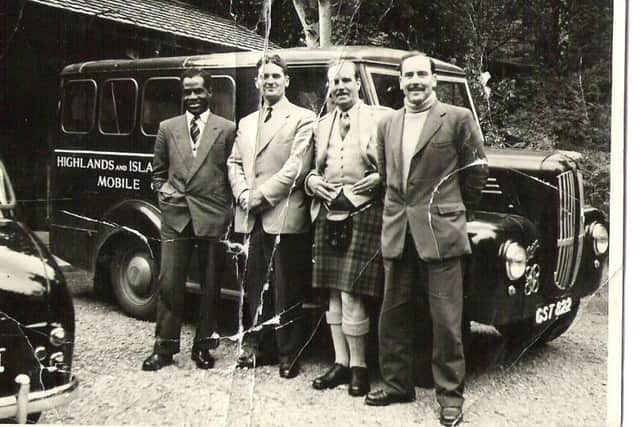The '˜wee cinema' that brought film to the Highlands


From films being dispatched by rowing boat to reels being rescued from the sea and viewers taking heated bricks to the screenings to keep themselves warm,, the history of the Highlands and Islands Film Guild is peppered with capers and laughs.
As well as entertaining and informing, the publicly funded society served the important social function of bringing people together – usually in freezing village halls – to share the communal experience of enjoying a film.
Advertisement
Hide AdAdvertisement
Hide AdFrom Fair Isle to Wester Ross, thousands of people benefited from the work of the guild from 1946 until the last credits rolled in 1971. Dr Ian Goode, of the Film and Television Studies department at Glasgow University, will this week host a gathering of former operators employed by the guild at Eden Court Theatre in Inverness.


The event is the result of a three-and-a-half year research project into the guild and its work, with vast amounts of time spent on the road to reach those who remembered the “wee cinema”. Dr Goode said: “We want to do justice to the fact that people’s experiences of film didn’t just occur in cities and towns, but in places such as Fair Isle and the Western Isles. I think, as a person who was educated in film, you weren’t really made aware that is how film could be experienced.”
The guild was sparked by the Second World War when films for evacuees and Ministry of Information productions were distributed through the country. Flms were seen in areas they never had been previously, and an expectation of moving images and stories was created. The Scottish Agricultural Organisation Association drew up the plan for the film guild in 1946, with cultural organisations and colleges working to bring film to the people. It was hoped that film could deflect from depopulation and help rural areas remain attractive.
By the mid 1950s, the society had moved from Edinburgh to Inverness, with 14 units covering the far reaches of Scotland.
Advertisement
Hide AdAdvertisement
Hide AdProjectors, screens and reels were driven across the country, usually in a Trojan van, with fishing boats also used to take the kit to its final destination.


Dr Goode said: “It really was an intricate operation. There are tales of films being lost off of boats and retrieved from sea beds and taken home and dried out. Once, a film was pulled from the bottom of the sea near Kirkwall.”
There was some opposition to the films coming into communities, with certain elements from the Presbyterian Church in Wester Ross offering resistance to the society’s work.
Dr Goode added: “We are talking about the 1950s. Operators would be challenged. The selection of films on offer was really quite conservative as they were trying to attract a family audience. The issue was really the medium itself and what it represented. One operator, as a relatively young man, was shocked by the vehemence that he encountered.”
Advertisement
Hide AdAdvertisement
Hide AdFilm night was advertised in newspapers, on posters nailed to trees or pinned in shop windows. The operators who arrived to set up the film became celebrated in the communities where they worked.
“These people were the personification of cinema rather than going to an Odeon that was lit up in neon. There was a more human relationship with what cinema meant. One woman we spoke to described her operator as her equivalent of Gregory Peck.”
One memory of the cinema loomed large for many – the cold village hall where the films were usually watched. Dr Goode said: “People would take in heated bricks to keep warm. When you look at the pictures, people have always got hats and scarves on but it never seemed to detract from the desire to go.”
“The guild reached a lot of people and it is remembered by a lot of people,” Dr Goode added.